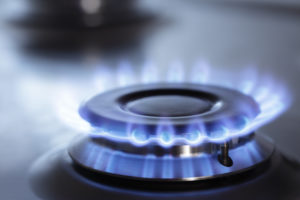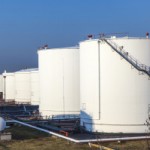 Natural gas extended its largest one-day drop in more than 4 years, as weather forecasting models called for significant warming across most of the densely-populated US areas, easing heating demand.
Natural gas extended its largest one-day drop in more than 4 years, as weather forecasting models called for significant warming across most of the densely-populated US areas, easing heating demand.
On the New York Mercantile Exchange, natural gas for delivery in March fell by 2.75% to trade at $4.873 per million British thermal units by 10:26 GMT. Prices hit a session high at $4.982 per mBtu, while day’s low was touched at $4.876 per mBtu.
Yesterday, the energy source declined by 9.21%, marking the largest one-day drop since September 2009. However, prices settled last year 26% higher, the best performance since 2005 and second straight annual advance.
Warming short-term trend
The power-station fuel was pressured throughout the day amid forecasts for warming weather that would ease heating demand. NatGasWeather.com reported on January 31st that the series of Arctic blasts pushing deep into the central and eastern US had finally come to an end. Areas of light to moderate snowfall are expected today across the Midwest.
Over the coming days, high pressure will build into the central and eastern US, allowing temperatures to rapidly warm to near or above normal across much of the southern and eastern US, including the high population areas along the Northeast coast. According to the website, chilly air will remain over the Midwest and portions of New England, which will continue to support high natural gas and heating demand.
Extended forecast
Extended forecasting models however called for cold conditions over most of the US, keeping the energy source on track to post the best monthly performance in more than four years. NatGasWeather.com’s extended forecast for the week ended February 12th called for a very active weather pattern to take place, as cold Canadian air tracks into the Midwest, Mid-Atlantic and Northeast, bringing back below normal temperatures. The temperatures will drop to single digits and teens, which will lead to several days of high natural gas and heating demand.
According to the website, the pattern becomes difficult to be predicted, but it will certainly stay quite active with exciting weather continuing over much of the south-central and northern US. The latter will maintain moderate to high natural gas demand at least until mid-February.
EIAs weekly US gas storage report
The Energy Information Administration said yesterday in its weekly storage report that US natural gas inventories fell by 230 billion cubic feet in the seven days through January 24th, almost matching the median estimate of 15 analysts surveyed by Bloomberg for a 231-bcf withdrawal. The decline outstripped the five-year average drop of 162 bcf and last year’s 191-bcf decrease during the comparable week.
Total gas held in US underground storage hubs fell to 2.193 trillion cubic feet, 22.5% below last year’s amount of 2.830 trillion cubic feet during the comparable week. The deficit to the five-year average widened to a record 16.6%, up from 13.2% a week earlier.
Inventories at the East Region received a net withdrawal of 124 bcf and fell to 1 063 bcf, 20.2% below the five-year average of 1.332 trillion cubic feet. Stockpiles in the West Region fell by 22 bcf to 327 bcf and were 12.6% beneath the average. Inventories at the Producing Region slid by 84 bcf. At 803 bcf, they were 13.1% below the five-year average amount of 924 billion cubic feet.





